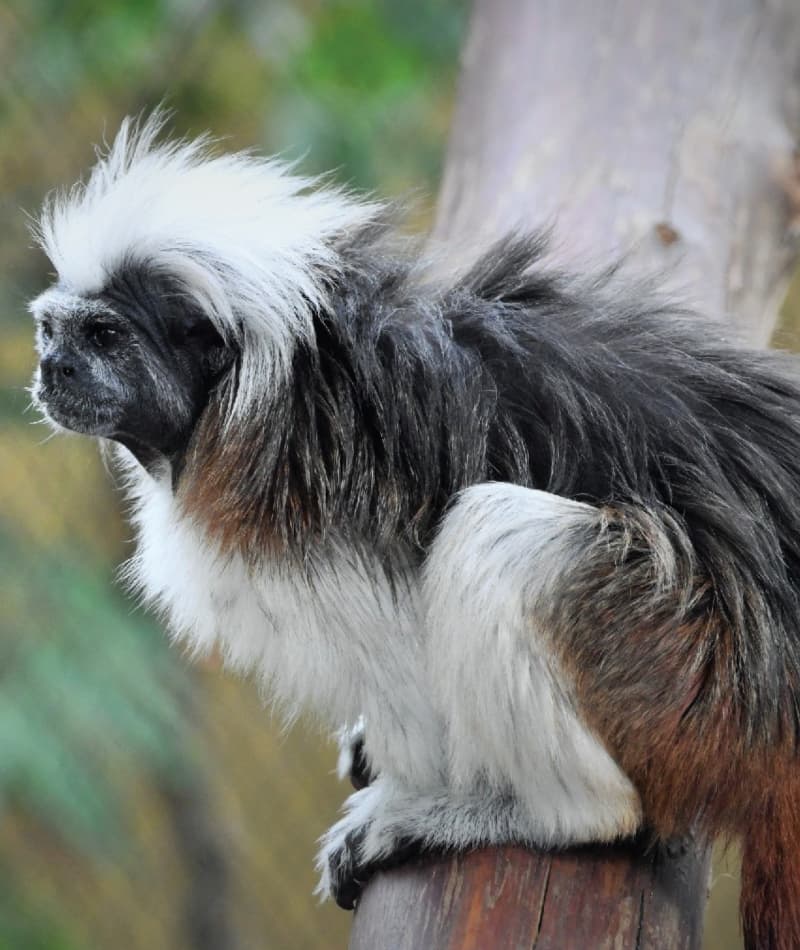
Cotton-top Tamarin
Saguinus oedipus
Did you know?
- Cotton-top tamarins are part of the Callitrichidae family, which they share with other tamarins and marmosets.
- Their name comes from their long, white-colored hair that covers their foreheads.
- They live in rainforests in Colombia.
- They live in family groups.
- A female frequently gives birth to twins.
Complicated Communication
Cotton-top tamarins have highly-developed vocal communication. They make a range of noises to communicate important information, like nearby danger. It is believed they have over 30 different calls and, even more impressively, grammatical structures that guide how to appropriately use their calls.
Social Structure
Cotton-top tamarins live in family groups that usually have three to nine monkeys. The family has a mating pair that typically mates for life and is in charge of the group. The entire family helps raise the babies. Fathers will carry their babies on their backs, often two at a time as many tamarin moms give birth to twins!
Threat Level
- Unknown
- Common
- Near Threatened
- Threatened
- Endangered
- Critically Endangered
- Extinct in the Wild
Critically Endangered
The Cotton-top Tamarin faces an extremely high risk of extinction in the wild.
Range
Colombia
Habitat
Forests

We care about cotton-top tamarins
Cotton-tops are endangered due to deforestation, hunting and capture for research and the pet trade.
The Saint Louis Zoo participates in the Species Survival Plan for cotton-top tamarins. This is a cooperative breeding program, with a number of zoos working together to ensure the survival of the species. We also support a family of tamarins in the Primate House at the Zoo. Learn more about how we are helping wildlife around the world.
Find this animal in Historic Hill

SAINT LOUIS ZOO ZONE
Historic Hill
Historic Hill is a lovely stroll through one of the oldest parts of the Saint Louis Zoo. From the 1904 World’s Fair Flight Cage to the Spanish architectural flavor of the 1920s in the Bird House, Primate House and Herpetarium to the finishing touches of our thoroughly modern exhibits, this area of the Zoo has a unique ambiance and a nostalgic history that make it a great destination.

